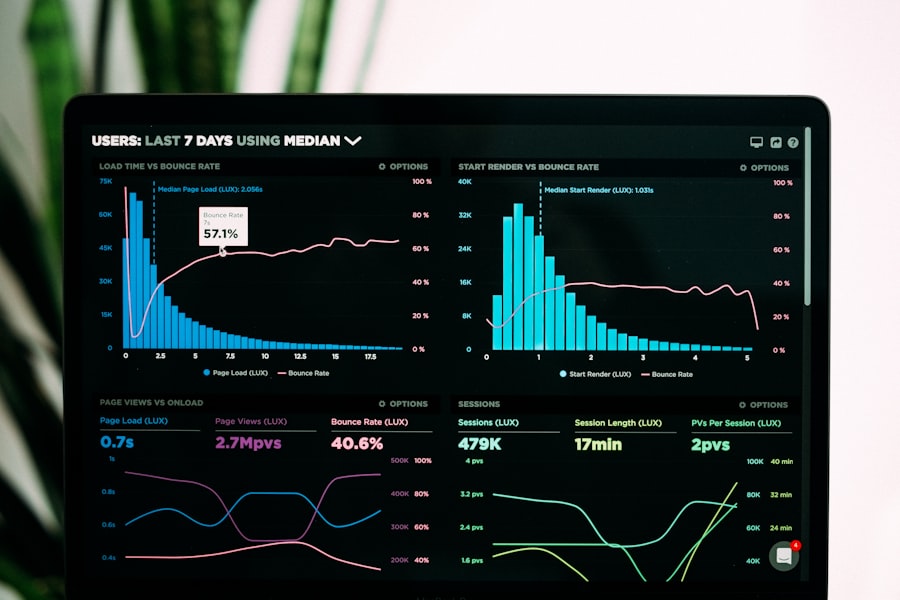Advertising technology, commonly referred to as adtech, encompasses a wide array of tools and platforms that facilitate the buying, selling, and management of digital advertising. At its core, adtech serves as the backbone of modern marketing strategies, enabling brands to reach their target audiences more effectively and efficiently. The evolution of adtech has been driven by the rapid growth of digital media consumption, which has transformed how consumers interact with brands.
With the proliferation of online platforms, advertisers now have access to a wealth of data that can be harnessed to tailor their marketing efforts. Adtech operates through various components, including demand-side platforms (DSPs), supply-side platforms (SSPs), ad exchanges, and data management platforms (DMPs). These elements work in concert to streamline the advertising process, allowing marketers to bid on ad space in real-time and optimize their campaigns based on performance metrics.
The role of adtech in marketing extends beyond mere ad placement; it also involves audience segmentation, creative optimization, and performance tracking. By leveraging these technologies, brands can create more relevant and engaging advertising experiences that resonate with consumers, ultimately driving higher conversion rates and return on investment (ROI).
Key Takeaways
- Adtech plays a crucial role in modern marketing by enabling targeted and efficient advertising campaigns.
- Leveraging data and analytics is essential for creating targeted advertising that resonates with the right audience.
- Programmatic advertising offers efficiency and precision in reaching the target audience at scale.
- Integrating adtech with CRM systems allows for a more personalized and effective advertising approach.
- Dynamic Creative Optimization (DCO) helps in creating personalized ads that drive better engagement and conversion.
Leveraging Data and Analytics for Targeted Advertising
Data is the lifeblood of effective advertising in the digital age. By leveraging data analytics, marketers can gain insights into consumer behavior, preferences, and demographics, allowing them to craft highly targeted advertising campaigns. This process begins with the collection of first-party data—information gathered directly from consumers through interactions with a brand’s website, mobile app, or social media channels.
Additionally, third-party data sources can provide valuable context about potential customers, enriching the understanding of target audiences. Once data is collected, advanced analytics techniques come into play. Marketers can utilize machine learning algorithms to identify patterns and trends within the data, enabling them to segment audiences based on specific criteria such as interests, purchasing behavior, or geographic location.
For instance, a retail brand might analyze its customer data to discover that a significant portion of its audience consists of young professionals interested in sustainable products. Armed with this knowledge, the brand can tailor its advertising messages to highlight eco-friendly offerings, thereby increasing the likelihood of engagement and conversion.
Utilizing Programmatic Advertising for Efficient Campaigns

Programmatic advertising has revolutionized the way digital ads are bought and sold. This automated approach allows advertisers to purchase ad space in real-time through algorithms and bidding systems, significantly reducing the time and effort required for traditional ad buying processes. By utilizing programmatic advertising, marketers can optimize their campaigns based on performance metrics and audience insights, ensuring that their ads are displayed to the right people at the right time. One of the key advantages of programmatic advertising is its ability to leverage real-time data for decision-making. For example, if a particular ad is underperforming in terms of click-through rates (CTR), programmatic systems can automatically adjust bids or reallocate budget to higher-performing ads or audience segments.
This level of agility is crucial in today’s fast-paced digital landscape, where consumer preferences can shift rapidly. Furthermore, programmatic advertising encompasses various formats, including display ads, video ads, and native ads, allowing brands to diversify their marketing strategies while maintaining efficiency.
Integrating Adtech with Customer Relationship Management (CRM) Systems
| Metrics | Description |
|---|---|
| Customer Engagement | The level of interaction and communication between the customer and the company through adtech and CRM integration. |
| Conversion Rate | The percentage of potential customers who take a desired action, such as making a purchase or signing up for a service, as a result of the adtech and CRM integration. |
| Customer Lifetime Value | The predicted net profit attributed to the entire future relationship with a customer, taking into account adtech and CRM efforts. |
| Return on Investment (ROI) | The measure of the gain or loss generated on adtech and CRM investment relative to the amount of money invested. |
The integration of adtech with customer relationship management (CRM) systems represents a significant advancement in how brands manage customer interactions and advertising efforts. By combining these two powerful tools, marketers can create a more cohesive strategy that enhances customer engagement and drives conversions. CRM systems store valuable customer data that can inform advertising strategies, while adtech provides the means to deliver targeted messages based on that data.
For instance, a company might use its CRM system to identify high-value customers who have previously made significant purchases. By integrating this information with adtech platforms, the brand can create personalized advertising campaigns aimed at these customers, promoting complementary products or exclusive offers. This targeted approach not only increases the likelihood of repeat purchases but also fosters brand loyalty by making customers feel valued and understood.
Moreover, the feedback loop created by this integration allows marketers to continuously refine their strategies based on customer responses and behaviors.
Personalizing Ads with Dynamic Creative Optimization (DCO)
Dynamic Creative Optimization (DCO) is a cutting-edge technique that enables advertisers to deliver personalized ad experiences in real-time. By utilizing DCO technology, marketers can automatically generate variations of ad creatives based on user data and contextual factors such as location, device type, and browsing history. This level of personalization enhances the relevance of ads, making them more appealing to consumers and increasing engagement rates.
For example, an online travel agency might use DCO to tailor its advertisements based on a user’s recent search history. If a user has been exploring beach destinations, the agency can dynamically generate ads showcasing vacation packages to tropical locations while highlighting special deals or unique experiences available at those destinations. This approach not only captures the user’s interest but also drives higher conversion rates by presenting offers that align with their specific preferences.
As consumers increasingly expect personalized experiences from brands, DCO has become an essential tool for marketers looking to stand out in a crowded digital landscape.
Optimizing Adtech for Mobile and Cross-Device Advertising

As mobile device usage continues to rise, optimizing adtech for mobile and cross-device advertising has become paramount for marketers seeking to reach consumers effectively. Mobile devices account for a significant portion of internet traffic, making it essential for brands to ensure their advertising strategies are tailored for smaller screens and touch interfaces. This involves not only creating mobile-friendly ad formats but also understanding how users interact with content across different devices.
Cross-device advertising allows marketers to track user behavior across multiple platforms—such as smartphones, tablets, and desktops—enabling them to deliver cohesive messaging regardless of the device being used.
By employing cross-device tracking technologies, marketers can create a seamless experience that reinforces brand messaging and encourages conversions across various touchpoints.
Implementing Ad Fraud Prevention Measures
Ad fraud poses a significant threat to the effectiveness of digital advertising campaigns, costing brands billions of dollars each year. As fraudsters develop increasingly sophisticated tactics to exploit vulnerabilities in adtech systems, it is crucial for marketers to implement robust prevention measures. These measures include employing advanced verification technologies that can detect fraudulent activity in real-time and ensuring transparency in ad placements.
One common form of ad fraud is click fraud, where automated bots generate fake clicks on ads without any genuine interest from real users. To combat this issue, advertisers can utilize anti-fraud solutions that analyze traffic patterns and user behavior to identify suspicious activity. Additionally, implementing strict verification processes for publishers can help ensure that ads are displayed on legitimate websites with real human audiences.
By prioritizing ad fraud prevention measures, brands can protect their advertising investments and maintain trust with their customers.
Measuring and Analyzing Adtech Performance for Continuous Improvement
The measurement and analysis of adtech performance are critical components of any successful digital marketing strategy. By continuously monitoring key performance indicators (KPIs) such as click-through rates (CTR), conversion rates, and return on ad spend (ROAS), marketers can gain valuable insights into the effectiveness of their campaigns. This data-driven approach allows brands to make informed decisions about where to allocate resources and how to optimize their advertising efforts.
Advanced analytics tools enable marketers to conduct A/B testing on various elements of their campaigns—such as ad creatives, targeting parameters, and bidding strategies—to determine what resonates best with their audiences. For example, a brand might test two different headlines for an advertisement to see which one generates higher engagement rates. By analyzing the results of these tests, marketers can refine their strategies over time, ensuring that they are continually improving their ad performance and maximizing ROI.
In addition to A/B testing, utilizing attribution modeling can provide deeper insights into how different touchpoints contribute to conversions along the customer journey. Understanding which channels are most effective at driving sales allows marketers to allocate budgets more strategically and enhance overall campaign performance. By embracing a culture of continuous improvement through measurement and analysis, brands can stay ahead in an ever-evolving digital landscape while delivering impactful advertising experiences that resonate with consumers.
Adtech is a rapidly growing industry that is revolutionizing the way businesses reach their target audiences online. One related article that delves into the world of digital marketing is com/diet-and-health-exploring-the-benefits-of-vegetarian-and-non-vegetarian-diets/’>”Diet and Health: Exploring the Benefits of Vegetarian and Non-Vegetarian Diets”.
This article discusses the impact of different dietary choices on overall health and well-being, much like how adtech can impact the success of marketing campaigns. By understanding the benefits of various diets, individuals can make informed decisions about their health, just as businesses can make informed decisions about their advertising strategies with the help of adtech.





















+ There are no comments
Add yours